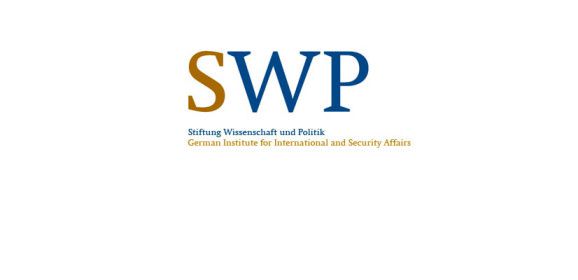Section: German Institute for International and Security Affairs (Germany)
Not Frozen!
Since 2014 German and European attention has been largely absorbed by the annexation of Crimea, the war in Donbas and the crisis in relations with Russia. Yet the eastern neighbourhood also contains four unresolved territorial conflicts, which have in some respects developed very dynamically since 2014. The authors of this study examine the role...
Germany and the Eastern Partnership After the Ukraine Crisis
…read more Source: German Institute for International and Security...
Leadership in the Ukraine conflict: A German moment
…read more Source: German Institute for International and Security...
Russia’s annexation of Crimea: The mills of international law grind slowly but they do grind.
…read more Source: German Institute for International and Security...
European Disintegration: Too Much to Lose
For decades the search for deeper integration characterised the European Union. Today the discussion revolves around disintegration. It began with the Greek debt crisis, but only came into its own with summer 2015’s major influx of refugees and the reimposition of controls at certain borders. In June the United Kingdom will vote on whether...
NATO Needs Deterrence and Dialogue
Deterrence is back in Europe. As NATO approaches its July summit in Warsaw, Allies are adapting this concept to the new security settings in place in Europe since the 2014 crisis in Ukraine. Yet, deterrence is intrinsically connected to dialogue: these are the two pillars of NATO’s strategy, as defined in the 1967 Harmel Report....
The Future of the Minsk Agreements
The Minsk agreements are currently the principal instrument for achieving a lasting settlement in the occupied regions of eastern Ukraine. Moscow and Kyiv, however, are showing little enthusiasm for implementing the associated package of measures. Unless this changes by the summer, the European Union would be ill-advised to lift or relax its...
Nordic-Baltic Security, Germany and NATO
The countries around the Baltic Sea are among Europe’s frontline states affected by the conflict between Russia and western Europe. The Baltics and Nordics share a common concern about a revisionist, aggressive, and rearming Russia: Since the onset of the crisis in and around Ukraine in 2014, these countries have felt increasingly exposed...
The Rule of Law in Contemporary Ukraine
Ukraine’s Euromaidan protest movement, which brought about the fall of President Yanukovych in 2014, has led to a comprehensive process of reforms. However, this process is being hampered and delayed by a large number of internal and external hurdles. There are particularly significant obstacles to establishing a state governed by the rule...
Offshore Hydrocarbon Resources in the Arctic
The Arctic region has been an area of low tension since the end of the Cold War. This observation is important because the run on hydrocarbons in the Arctic has not resulted in increased rivalries as expected. The outcomes have been international joint ventures in oil and gas project on the economic side and a strengthening of Arctic governance...


